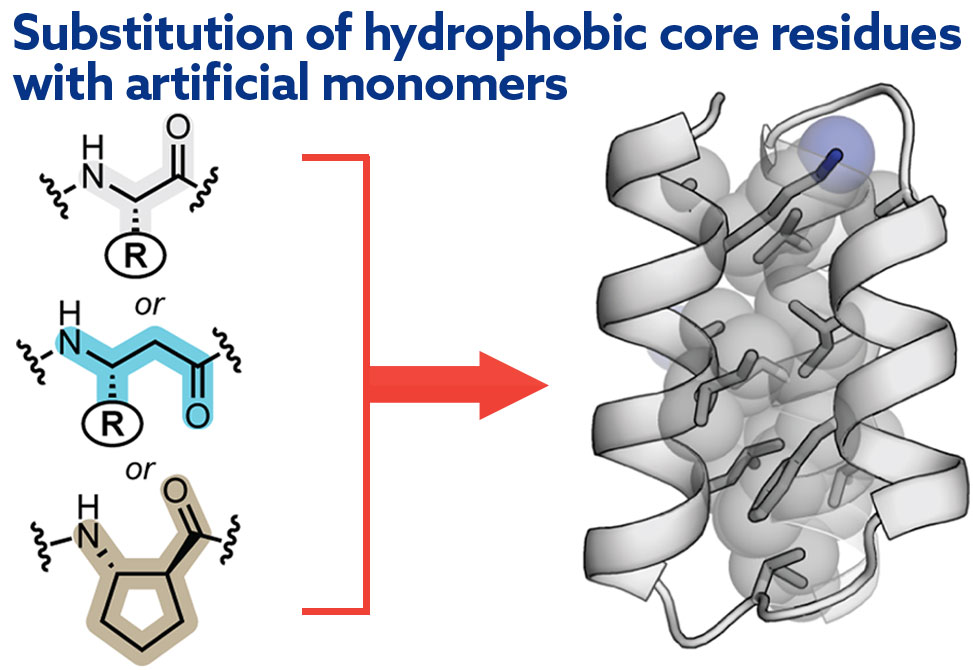Backbone Modification
Reflecting recent work in the Horne Lab
Targeted protein backbone modification can recreate tertiary structures reminiscent of folds found in nature on artificial scaffolds with improved biostability. Incorporation of altered monomers in such entities is typically limited to sites distant from the hydrophobic core to avoid potential disruptions to folding. This is limiting, as it is advantageous in some applications to incorporate artificial connectivity at buried sites.
Yuhan Lin and Seth Horne from the University of Pittsburgh, report in Chemistry a European Journal, an examination of protein backbone modification targeted specifically to hydrophobic core positions and its impacts on tertiary folded structure and fold stability. Different artificial monomer types are placed at core, core-flanking, or solvent-exposed positions in a compact three-helix protein. Effects on structure and folding energetics are assessed by NMR spectroscopy and biophysical methods. Results show that artificial residues can be well accommodated in the hydrophobic core of a defined tertiary fold, with effects on stability only modestly larger than identical changes at solvent-exposed sites.
Collectively, these results provide new insights into folding behavior of protein-like artificial chains as well as strategies for the design of such molecules.


